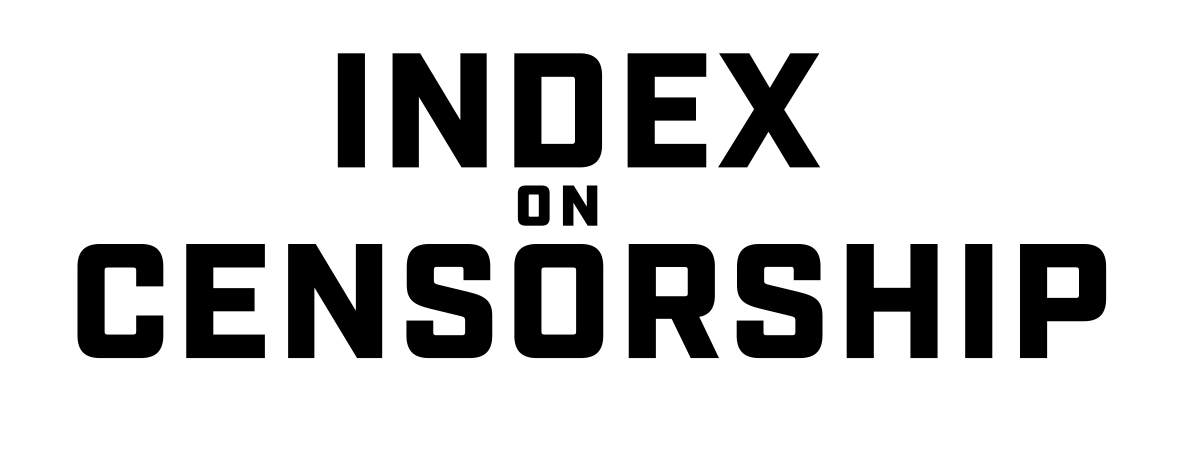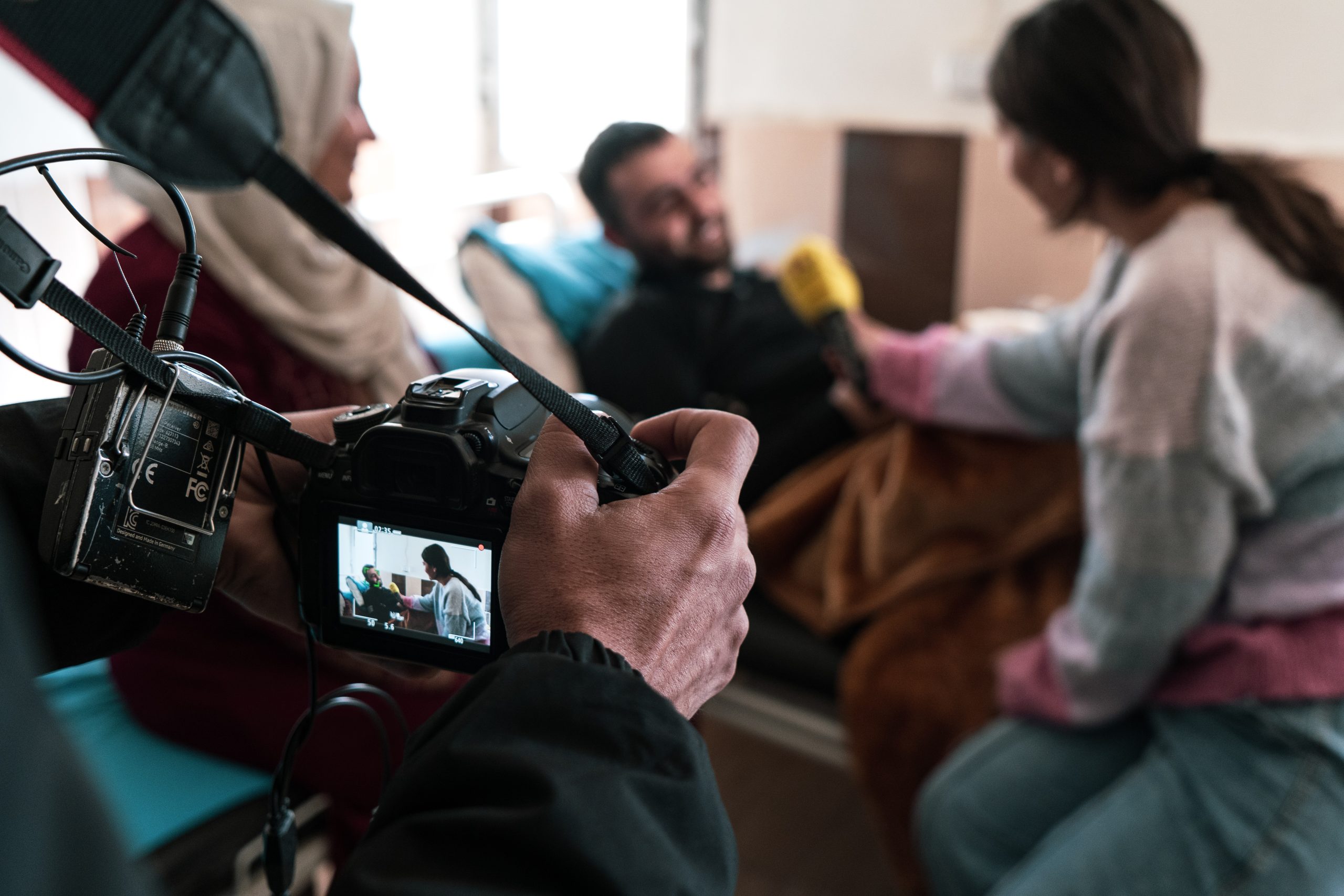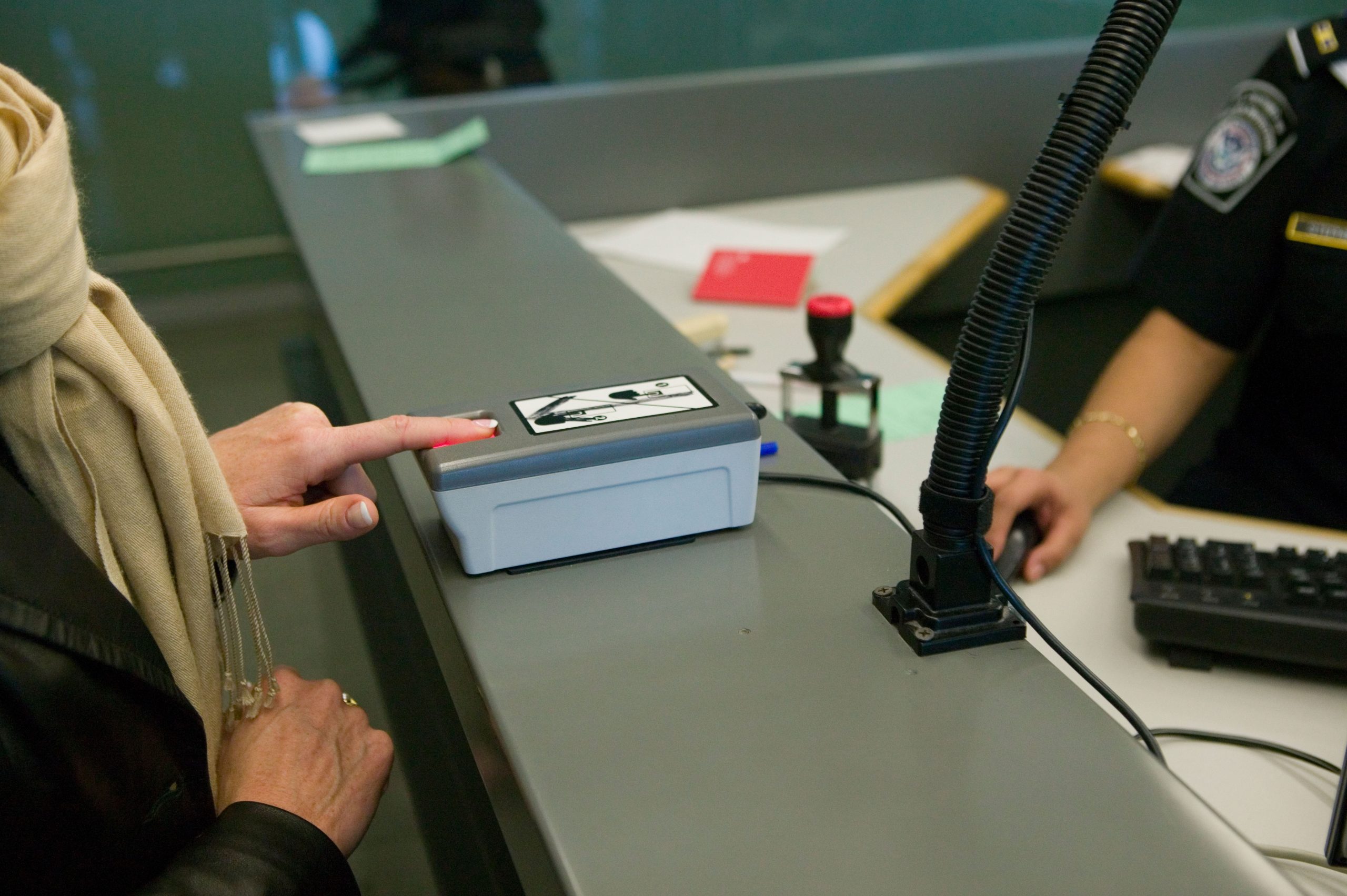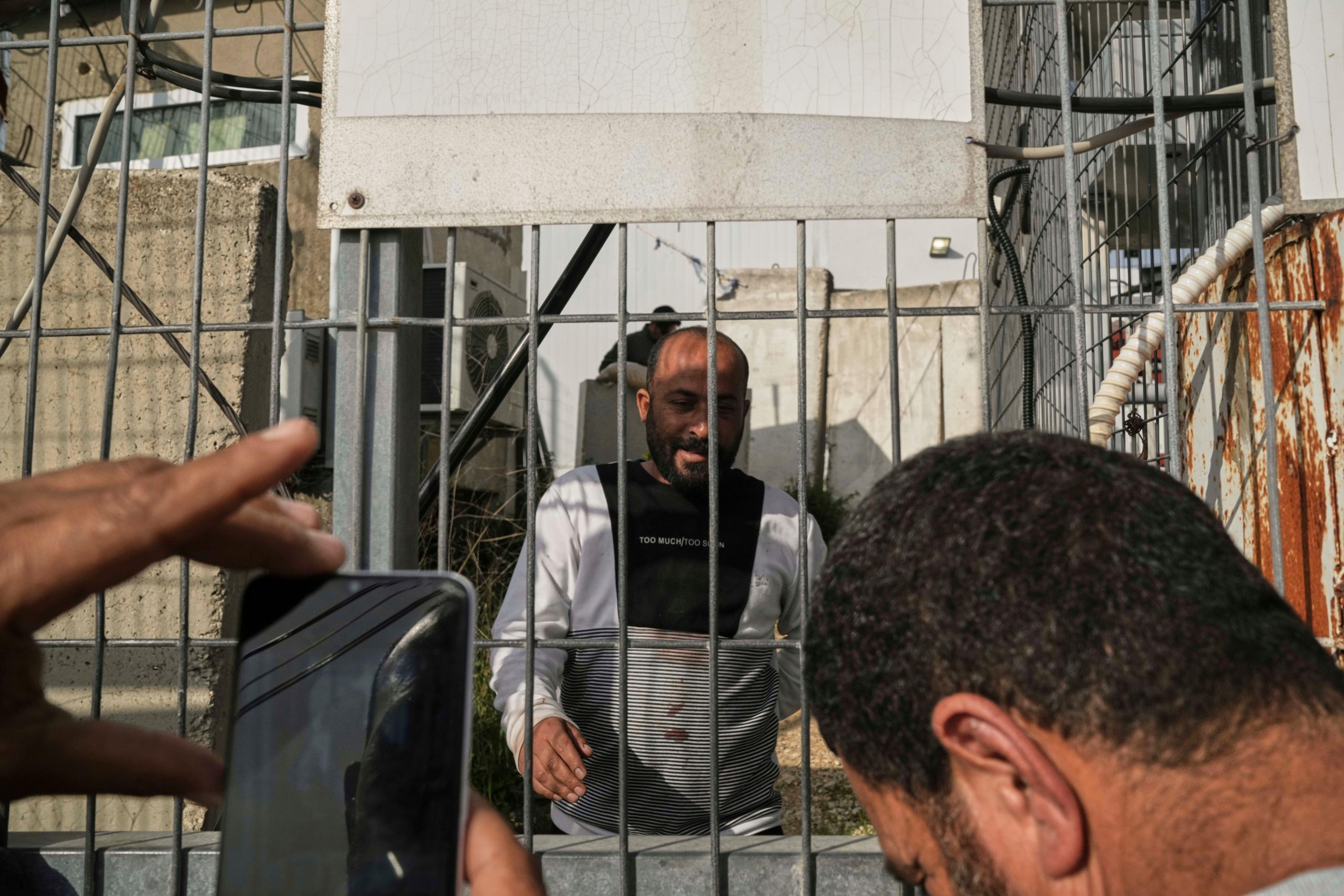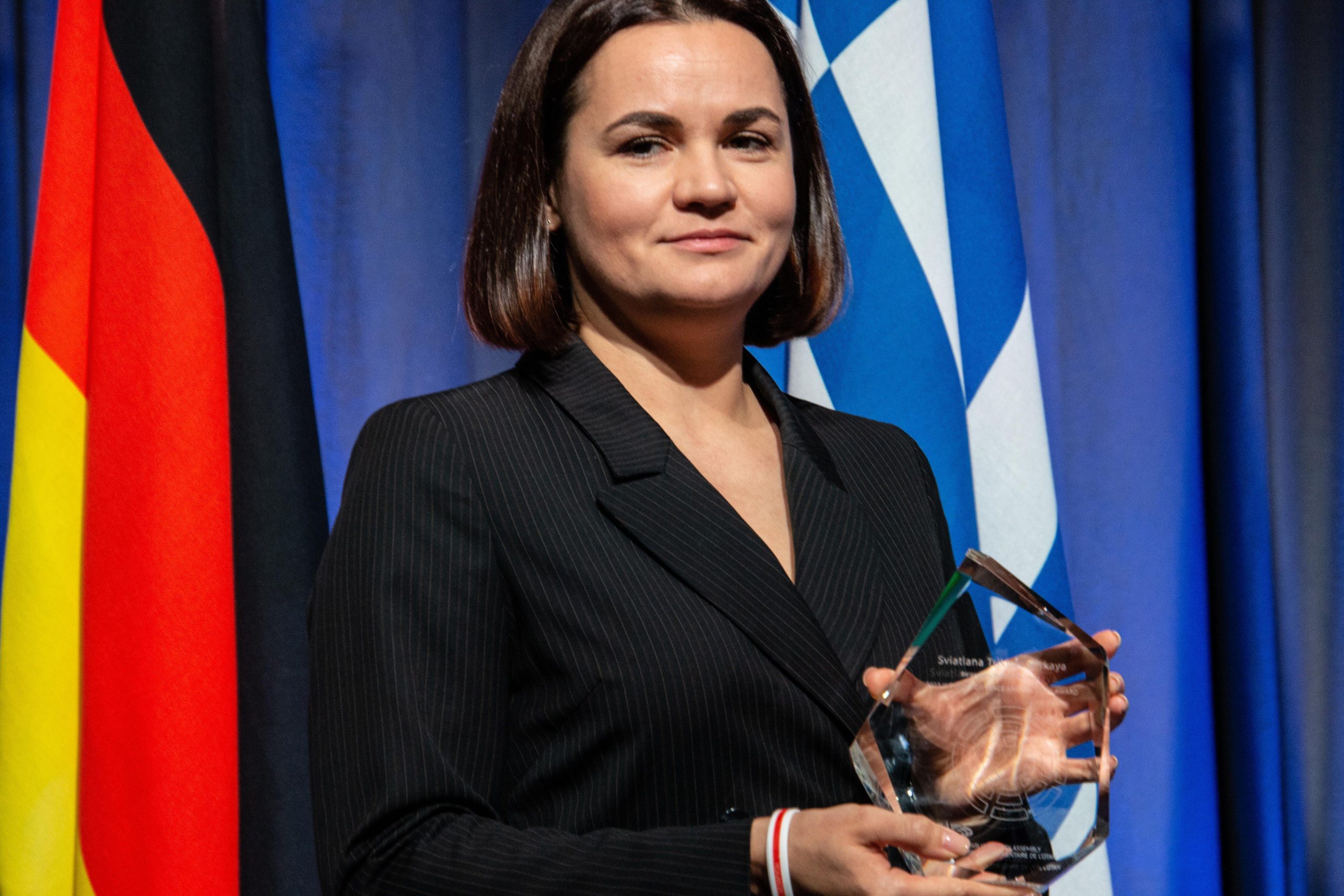At 2.30pm on 19 December 2024, Ahmed Mohamed, editor-in-chief of the Syrian-Kurdish Hawar News Agency (ANHA), received a dispatch from two of his colleagues. An hour later, they were dead.
“They had just sent me a message saying ‘we’re coming back’,” Mohamed told Index.
Cihan Bilgin and Nazim Daştan, two Kurdish reporters, were reportedly targeted and killed by a Turkish airstrike as they returned from the Tishreen Dam near Aleppo, where they were covering ongoing clashes between the Kurdish-led Syrian Democratic Forces (SDF) and the Turkish-backed network of militias known as the Syrian National Army (SNA).
Indeed, Turkey, which is violently opposed to the Kurdish-led project due to its own domestic repression of the Kurdish cause, continues to target the region and journalists in particular, profiting from the chaos caused by the fall of former Syrian president, Bashar al-Assad. According to the Kurdish-run Firat News Agency (ANF), Turkey has killed 14 journalists and wounded seven others in the Iraqi Kurdistan and Syrian Kurdistan (Rojava) regions since 2019.
Journalists under attack
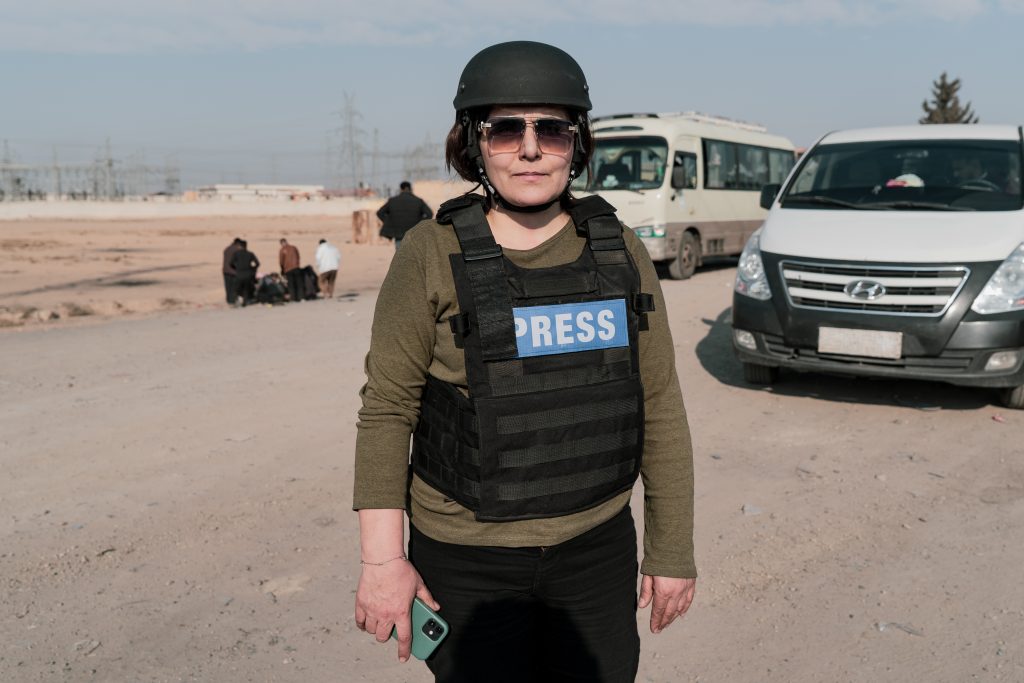
Sinem Adali, a journalist for Rojava TV, is preparing to go to the Tishreen dam front. Photo by Angeline Desdevises / Hans Lucas
In ANHA’s editorial offices in Qamishli, the de-facto Syrian Kurdish capital, a memorial showcases the microphones and cameras of journalists who died in the line of duty. Since 2017, six of ANHA’s journalists have been killed in the field: three reportedly in Turkish attacks, and three while covering the Kurds’ famous fight against the Islamic State of Iraq and the Levant (ISIL).
Despite the recent ceasefire agreement between Syria’s new Turkish-linked president Ahmed al-Sharaa and SDF commander Mazloum Abdi, Turkish bombardments continue to target the Tishreen Dam, according to local monitor Rojava Information Center.
Leyla Abdi, a reporter for Ronahi TV, was wounded at the dam in January. Three days after her arrival at the dam, she was standing alongside civilians staging a protest on the crucial infrastructure, when she was hit by a bombardment. “That day, a dozen drones flew over us all day long. Turkey systematically strikes civilian convoys,” said Abdi, who is still recovering from her injuries.
Kurdish journalists aren’t only targeted when working on the frontline. Repeated attacks have made the road along the Turkish border dangerous, if not impassable. It was here that, in August 2023, the vehicle of the women’s television channel Jin TV was destroyed. The driver, Necimedîn Sînan, was killed instantly, while journalist Delila Ağît lost an arm. Dijwar Iso, who also works at ANHA, said that press workers are now obliged to switch off their phones during missions to prevent the Turkish armed forces on the other side of the border from being able to track and target them.
These attacks are part of a wider drive to stifle the press from covering Turkey’s occupation of North and East Syria, which has killed hundreds and displaced hundreds of thousands of primarily Kurdish civilians to date. In November 2022, journalist Essam Abdallah was killed and another journalist Mohammad Al Jarada was injured in separate Turkish air raids on the same day.
In 2019, a civilian convoy accompanied by Kurdish journalists and a French television team was bombed by Turkish forces, killing two local journalists and injuring others. Several civilians were also killed in the strike.
Although journalists are protected by international law, Turkish president Recep Tayyip Erdoğan’s administration is stepping up its attacks on journalists beyond its borders. In neighbouring Iraq, a drone strike in August last year killed two Kurdish media workers working for a local TV channel and wounded their colleague. Local sources say the drone was operated by the Turkish armed forces, which the Turkish defence ministry has denied. Human rights organisations and Kurdish media unions have called on the United Nations to investigate attacks on journalists, which they describe as “war crimes”.
Gypsy Guillén Kaiser, director of advocacy and communications at the Committee to Protect Journalists (CPJ) in New York, drew attention to the recent murder of Cihan Bilgin and Nazim Daştan, calling on the Turkish authorities to conduct a thorough investigation.
Psychological warfare
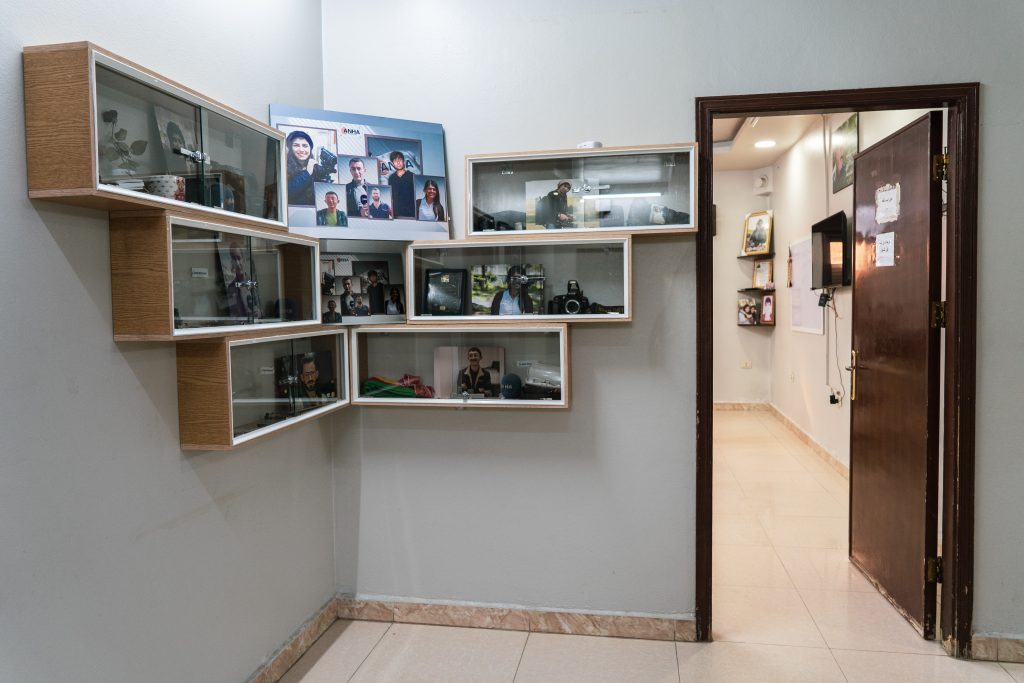
In ANHA’s offices, a memorial showcase displays the equipment and photos of six journalists who died while doing their job in north-eastern Syria. Photo by Angeline Desdevises / Hans Lucas
These constant attacks have created a climate of insecurity for all journalists in the region. Local journalist Loristan Derwish said: “As a woman, it was already hard to obtain the legitimacy to practise our profession and now we are confronted with attacks from Turkey and online harassment.” At the end of 2024, she was subjected to a wave of online harassment following a TV report she made interviewing female Kurdish fighters. Several Instagram accounts impersonating her were created, displaying fake pornographic photo montages. She believes the culprits are in Turkey.
Online harassment is predominantly aimed at female journalists. Arîn Swed, spokesperson for the Syrian Kurdish Women’s Media Union (YRJ), said the union defends all female media workers against sexist and psychological attacks. “We supported Cîhan when she was threatened over the phone by MIT [Milli İstihbarat Teşkilatı – the Turkish secret service],” she said.
As of today, it is believed that at least five journalists, including Ciwana Cuma, a reporter for Ronahî TV, are being targeted. Cuma has covered the confrontations at the Tishreen Dam on several occasions. In a post on X (which has since been deleted) made by a Turkish account with more than 200,000 followers, the young woman was described as “another example like Cihan Bilgin”, “a terrorist”, and therefore identified as a potential future target.
The dehumanisation of journalists continues after their death. According to multiple sources, a photo of the decapitated body of reporter Vedat Erdemci, who was killed in a Turkish airstrike in 2019 in the Syrian city of Ras al-Ain, was sent to his mother. The Turkish state also refused to allow Cihan Bilgin and Nazim Daştan’s bodies to be handed over to their families in Turkey. They were finally buried in Qamishlo in January.
The West’s failure to respond to these crimes also creates negative psychological outcomes, local press workers say. “The death of a Kurdish journalist doesn’t cause a stir. The West creates a hierarchy among lives,” said Berîtan Ali, the regional head of a Kurdish TV station. Dilyar Cizîrî, co-chair of Free Press Union (YRA) organising in north-east Syria echoed her words: “Turkey’s attacks benefit from a sense of impunity, [caused] by the silence of international institutions.”
Destroying material resources
Beyond psychological attacks and online harassment, one of Turkey’s objectives is to shut down all means of expression for journalists in north and east Syria. Their social media accounts are frequently closed down by the platforms and their websites hacked. The ANHA website is the victim of roughly 7,000 cyber attacks per day, according to editor Mohamed. In 2019, hackers succeeded in replacing the homepage with a Turkish nationalist message, he said. Radio frequencies are also hijacked, the editor added, and overlaid with Turkish nationalist propaganda.
The media also face difficulties in obtaining the equipment they need to do their job, due to an embargo imposed on the region. “It is impossible to transport professional equipment legally across the Iraqi border. We have to find other ways,” said Mohamed. The workers are therefore forced to smuggle in protective equipment, such as bulletproof vests and helmets. ANHA only owns five vests for a team of 61 journalists, he said.
Fleeing domestic repression

The bodies of the two Kurdish journalists Cihan Bilgin and Nazim Daştan are buried in Qamishli. Photo by Angeline Desdevises / Hans Lucas
In Turkey, attacks on opposition journalists have forced many into exile. Threatened with imprisonment for covering a demonstration near the Syrian border, Turkish-Kurdish journalist Dilan Dilok had to flee Turkey for Syria in 2017. “If I return to Turkey, I will either be arrested or killed,” she said. She adds that Turkish police are trying to intimidate her again: “My parents are often raided in the middle of the night and subjected to long interrogations.”
Bazid Erven, a reporter for Kurdish news agency Ajansa Welat, and 10 other journalists were allegedly arrested on 20 December 2024 in Van, Turkey, for protesting against the assassination of their colleagues. “These arrests are nothing new, they are routine for us,” Erven said. The day after his own arrest, seven other journalists were detained in Istanbul for several weeks. “There is state and police repression against Kurdish journalists,” he added. It therefore comes as no surprise that Turkey is ranked 158 out of 180 countries in Reporters Without Borders’ worldwide press freedom ranking.
A future for the Syrian press
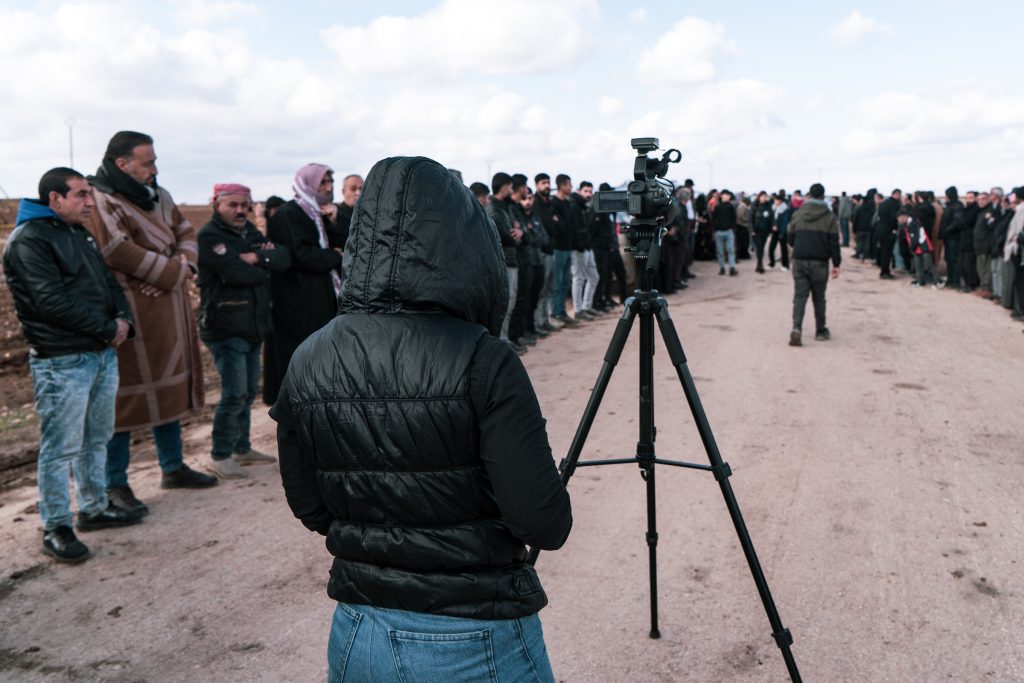
A Jin TV journalist reports on the funeral of two Kurdish political figures killed by a Turkish drone strike in Iraq. Photo by Angeline Desdevises / Hans Lucas
Since the fall of Assad’s regime, the ANHA agency has opened several offices across Syria. Its journalists, who previously worked underground in other regions of the country, can now operate openly. However, there is still concern for Syrian news professionals in view of the rampant insecurity in the country, a reality brought home by recent massacres committed by forces of the new government, targeting the Alawite minority.
On 6 February, interim prime minister Mohammed al-Bashir ordered the dissolution of the Syrian Journalists‘ Union (SJU). The Free Press Union (YRA)’s Cizîrî strongly condemned this decision: “The SJU was controlled by the former regime, but the solution should have been to restructure it.” The International Federation of Journalists also sent a letter to Al-Bashir and Syrian president Al-Sharaa, condemning the dissolution of the union and calling on them to uphold international law.
North and East Syria’s YRA says it is ready to help establish a new nationwide independent union and has just set up a Security Advisory and Risk Management Unit in order to provide “support and assistance to all Syrian journalists and media workers”. It seeks to pressure armed groups so that they abide by international law and wants to “contribute to efforts toward accountability and justice”.
In Qamishlo, the latter are yet to be found. Women’s Media Union (YRJ) president Swed is moved when she talks about her colleagues who have been killed in the field. But above all, she is determined to fight for their legacy: “As soon as [Cihan’s death] was announced, the women of the union took over. Today, if ANHA’s media coverage of Tishreen continues, it is thanks to the other women journalists.”
